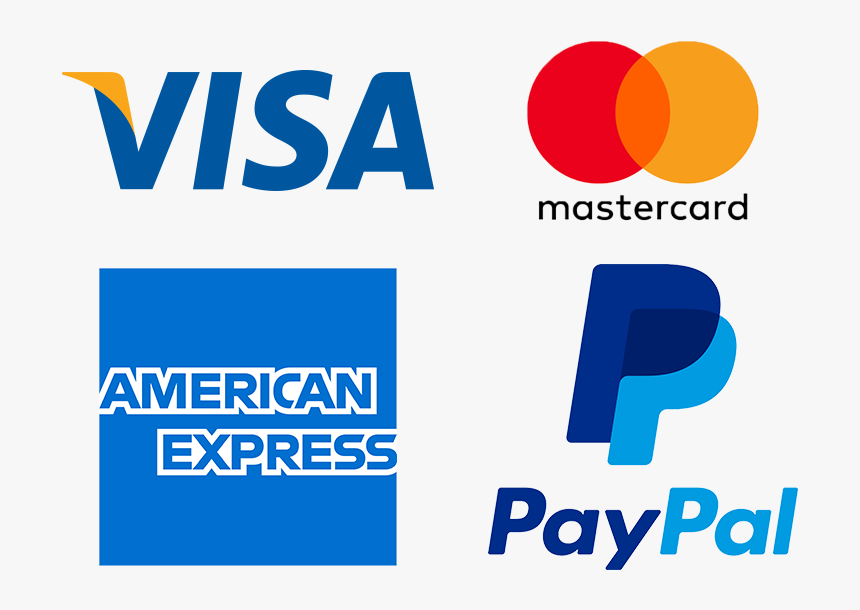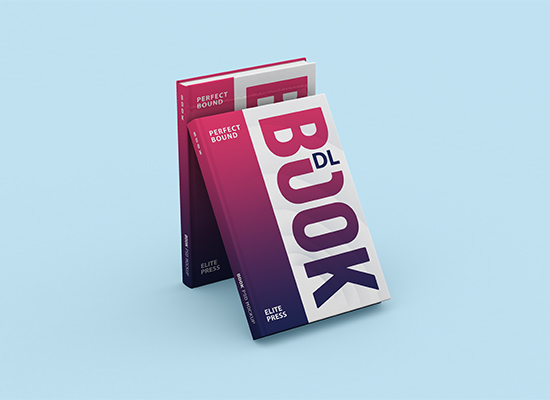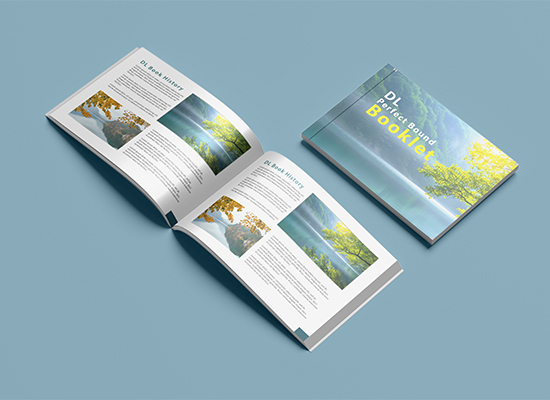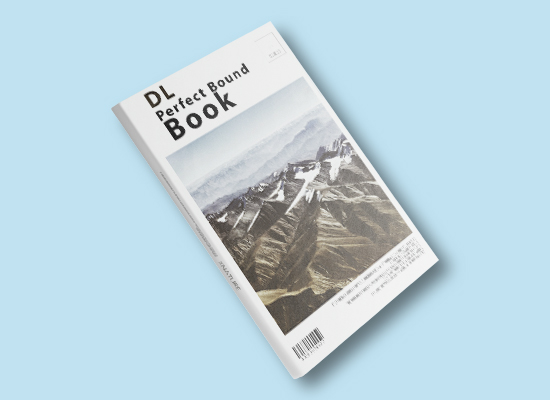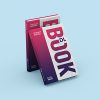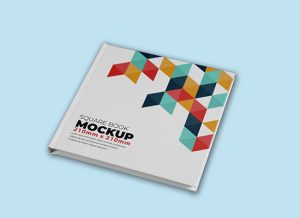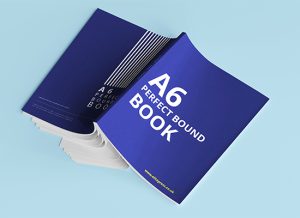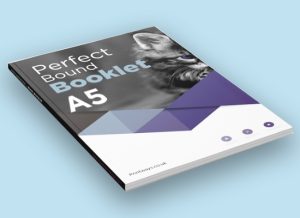Short Description
DL Perfect Bound Books
Additional Information
DL Perfect Bound Books
Create DL perfect bound books for a sleek, elegant format. Ideal for professional presentations and stylish, high-quality content.
Perfect Bound Books: A Deep Dive into Digital and Offset Printing
DL Perfect Bound Books are among the most popular bookbinding formats, widely used for paperback novels, manuals, reports, catalogs, and more. This binding method gives books a polished and professional appearance with a flat spine, clean edges, and an overall refined look. While traditional printing methods like offset printing have been used to produce perfect bound books for decades, the advent of digital printing has revolutionized this process. Here’s an in-depth look at perfect bound books, with a particular focus on digital printing (DL) and its advantages.
What is Perfect Binding?
Perfect binding is a widely used bookbinding method where the pages are stacked and glued together at the spine using a strong adhesive, often PUR (Polyurethane Reactive) glue, and then covered with a wraparound cover made of cardstock. The book’s spine is square and flat, and the other three sides are trimmed to give a neat, “perfect” finish. Unlike saddle-stitch binding, where staples hold the pages together, perfect binding results in a durable book that can accommodate thicker volumes.
Common Uses:
- Paperbacks (fiction, non-fiction)
- Magazines
- Annual reports
- Catalogs
- Manuals and guides
Digital Printing (DL) vs. Offset Printing
Before diving into the specific characteristics of perfect bound books in digital printing (DL), it’s important to understand the differences between digital and offset printing methods.
Offset Printing:
- This traditional method involves transferring ink from a plate to a rubber sheet, and then onto the paper.
- Best suited for large print runs, as the initial setup costs are higher, but per-unit cost decreases significantly with higher quantities.
- It offers superior color consistency, fine details, and can handle special printing techniques like spot UV, foil stamping, etc.
Digital Printing:
- Digital printing does not require plates; instead, it uses digital files to directly print on paper.
- It is ideal for short-run projects, where customization and quick turnarounds are crucial.
- The quality of digital printing has significantly improved, often rivaling the quality of offset printing.
- It allows for variable data printing, meaning each copy of a book can be personalized.
Perfect Bound Books in Digital Printing (DL)
With the rise of digital printing technology, DL Perfect Bound Books have become more accessible to self-publishers, small businesses, and organizations looking for cost-effective solutions. Here’s why digital printing has transformed perfect bound books:
1. Cost-Effective for Small Print Runs
One of the biggest advantages of digital printing for DL Perfect Bound Books is the ability to produce small print runs at an affordable price. Offset printing typically requires large print volumes to be cost-effective due to setup costs like plates and inks. Digital printing, however, allows for smaller quantities—sometimes as few as one book—without significant price inflation.
For self-published authors, small businesses, or organizations that need short runs of manuals, training materials, or reports, digital printing is a perfect solution. You can print only what you need without worrying about large inventories, and reprints are as simple as sending the file to the printer again.
2. Quick Turnaround Time
Digital printing eliminates much of the setup time associated with offset printing. There are no plates to prepare, and files can be sent directly to the printer. This makes digital printing a faster option, allowing for quick turnaround times. In many cases, digital print providers can offer same-day or next-day services for perfect bound books.
This speed is beneficial for time-sensitive projects like presentations, conferences, or events where you need a professional, bound book quickly.
3. Customization and Personalization
One of the standout features of digital printing is the ability to personalize each copy of a perfect bound book. Variable data printing enables the inclusion of individualized content on each book—whether that’s unique names, numbers, or images.
For example, companies can print annual reports or catalogs where each version is tailored to a specific client or region. Authors can also print limited-edition versions of their books with custom dedications or personalized covers.
4. High-Quality Output
In the early days of digital printing, the quality was often seen as inferior to offset printing, especially when it came to color accuracy and sharpness. However, modern digital printing technologies have advanced significantly. Today, digital presses offer exceptional color consistency, sharp details, and high-resolution printing that rivals offset.
DL Perfect Bound Books produced via digital printing are often indistinguishable from those printed on offset presses in terms of quality. From full-color photo books to high-detail graphic novels, digital printing can meet most quality expectations.
5. Flexibility in Paper and Finishes
Another benefit of digital printing for DL Perfect Bound Books is the wide range of paper stocks and finishes available. You can choose from various paperweights, gloss, matte, or uncoated finishes to suit your project’s needs. Additionally, digital printers now offer options for laminated covers, which provide extra durability and a more polished look.
DL Perfect Bound Books flexibility makes it easier for authors and businesses to create a custom look and feel for their books, whether they’re producing a corporate manual, a product catalog, or a softcover novel.
Limitations of Digital Printing for Perfect Bound Books
While digital printing has many advantages, it’s important to recognize that it’s not the best option for every project.
- Higher Cost per Unit for Large Print Runs
If you’re printing a large volume of DL Perfect Bound Books (usually over 500-1000 copies), offset printing may be more cost-effective. While digital printing has lower upfront costs, the cost per unit doesn’t decrease as dramatically as with offset printing when the quantity increases. - Limited Special Effects
Digital printing doesn’t easily accommodate special printing techniques like spot UV coating, foil stamping, or embossing, which are common in offset printing. For projects that require these effects, offset printing remains the better option. - Paper Size Limitations
Digital printing presses often have size limitations, meaning they might not handle oversized formats as easily as offset presses. If your DL Perfect Bound Books is particularly large or unusually sized, you may have to opt for offset printing.
Applications of DL Perfect Bound Books
The versatility and affordability of perfect bound books produced via digital printing open doors for many industries and individuals:
- Self-Publishing: Authors can produce short-run novels, memoirs, or poetry collections without the financial burden of a large print order.
- Corporate Materials: Businesses can print professional-quality reports, catalogs, and manuals on demand.
- Education: Schools and universities use DL Perfect Bound Books for student manuals, research papers, and alumni magazines.
- Photography and Art Books: Artists and photographers can create high-quality portfolios and photo books with stunning print quality and custom finishes.
Conclusion
DL Perfect Bound Books created using digital printing offer flexibility, cost-effectiveness, and high-quality results, especially for smaller print runs. Whether you’re a self-published author, a small business, or an organization in need of professional-looking printed materials, digital printing opens the door to endless possibilities for custom, high-quality perfect bound books. With faster turnarounds, the ability to print on demand, and near-offset quality, digital printing is a powerful tool in modern book production.
Get Your Quote
My Account
About Us
Our Products
Contact
Follow Us On
We Accept
